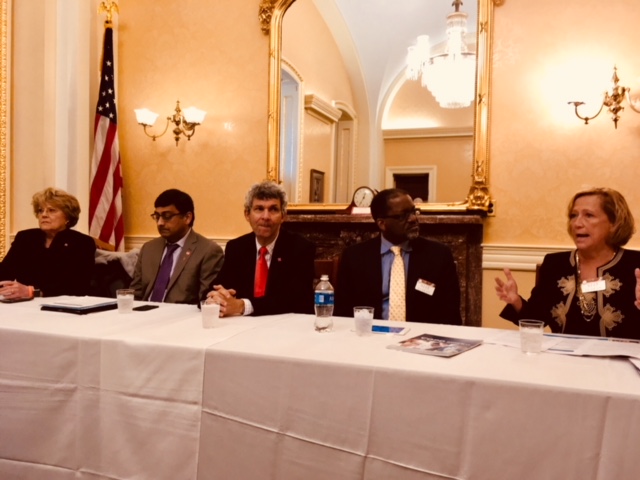From Discovery to Delivery: COPD Research at Work

When Grace Anne Dorney Koppel was diagnosed with chronic obstructive pulmonary disease (COPD), a progressive disease that makes it hard to breathe, her doctors told her she had 3-5 years to live. She had that conversation with her doctor nearly two decades ago. Today, she is a passionate advocate for COPD research and treatment. Noting that COPD patients have had the same treatments for 30 years, Koppel said “the clock is ticking and we cannot breathe.”
Koppel, president of the Dorney-Koppel Foundation, joined other speakers at a Research!America Capitol Hill briefing on November 15, 2017 that highlighted ongoing challenges with COPD research funding and access to treatment. She said the National Institutes of Health needs “triple the funding” it has for COPD research.
Dr. Gary Gibbons, director of the National Heart, Lung, and Blood Institute (NHLBI), stressed the urgent need for increased awareness, better diagnosis, prevention and treatments for COPD. Nearly 16 million Americans are living with COPD, which is the leading cause of death in the U.S. following heart disease and cancer. The NHLBI released a COPD national action plan this year with five goals that include translating policy recommendations into research and public health care actions; collecting and disseminating data to drive change; improving quality of care; and empowering people with COPD and their families to recognize and reduce the burden of COPD.
Collaboration, partnerships and research funding are critical to advancing COPD research, said Dr. Lisa Simpson, president and CEO, AcademyHealth, who moderated the panel.
Comparative effectiveness research, according to Dr. Jerry Krishnan, associate vice chancellor for Population Health Sciences, University of Illinois Hospital and Health Sciences System, is essential for developing treatments for the “right care, right person, at the right time.” He noted that “evidence gaps and care gaps” exist in the treatment of COPD. Care delivery science, he said, plays an important role in addressing evidence gaps.
“We still have a way to go,” said Dr. David Mannino, U.S. Respiratory Medical Expert, GlaxoSmithKline when asked about progress in treating the disease. But he shared that researchers have made great strides in understanding the relationship between co-morbidities and COPD. Panelists agreed that access to treatment, particularly pulmonary rehab facilities, remains a challenge mostly in rural areas.




